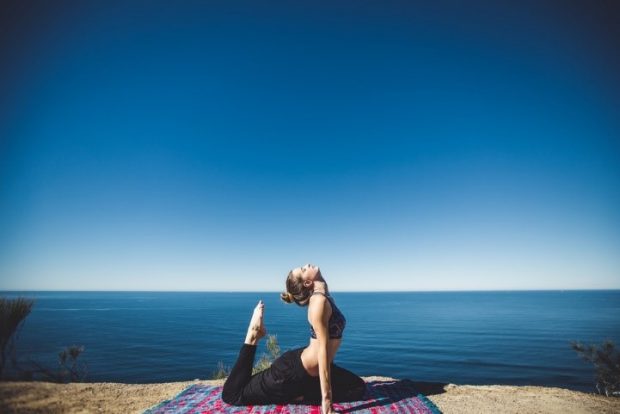14 Jan Don’t Forget the Fun! How to Foster Physical Activity Enjoyment
Most of us know physical activity is good for us, yet few of us are engaging in enough of it. One of the reasons we are not always active is that we don’t necessarily enjoy physical activity. First off…it’s hard. It takes us out of our resting state and at our core we are creatures of comfort. Sure there are always some who crave a workout, but for the vast majority of people there are just other things we’d rather be doing. So unless we find physical activity somewhat enjoyable we may not necessarily translate our intentions into behaviours.
Interestingly, there is a bit of a paradox when it comes to physical activity enjoyment. There is a ton of variability around how people feel during physical activity, but the one thing everyone seems to agree on is they feel good when it’s done*. However, it is actually the feeling during physical activity that predicts whether we will continue to be active! So if you find physical activity unbearable it is unlikely you will return to it. Furthermore, research shows reasons to be active such as the anticipation of pleasant feeling states, enjoyment and fun (or what researchers call affective attitudes), will always win out over reasons to be active such as health outcomes like weight loss or disease prevention (what researchers call instrumental attitudes)*. Put another way, there is evidence that affective attitudes are larger predictors of physical activity participation than instrumental reasons*. Clearly, enjoyment of physical activity is really important! For these reasons, M-PAC posits that higher affective attitude is necessary for behavioural enactment*.
Thankfully, we have some power to shape how we feel about physical activity and it is possible to maximize our expectations of enjoyment. Of course, choosing an activity that makes sense and resonates for you is the first step. Other strategies for fostering physical activity enjoyment are outlined below.
Focus on partaking in physical activity in environments you enjoy. Choose places that you feel content, comfortable and capable. For instance, after years of unused gym memberships I have realized I am simply not a gym person. I don’t like the atmosphere, don’t feel comfortable nor competent there, and I certainly don’t look forward to attending. Unsurprisingly, I just don’t go! It took me some time to realize that perhaps the gym is not the best environment for me. Instead, I focus on doing physical activity in environments that I find rewarding or stimulating. For example, I love beach walks, hikes in the lush rainforest, or running around my beautiful city. If you’re thinking “I’m not an outdoors person” – I get it. In that case, find activities you can do indoors! Maybe there’s a bright and welcoming yoga studio you enjoy nearby. Perhaps you prefer the comfort of your own home. If so, honour that! Find a routine to do in a cozy area of your home. Just try your best to find an environment you ENJOY! Also keep in mind that minimizing stress and hassle beforehand (hello local walking route!) and rewarding yourself afterwards (e.g., socializing or a treat) can contribute to overall positive attitudes towards physical activity.
Next we will chat about the intensity of your physical activity. It is important to self-pace your activity and be mindful of how hard you make it. Although some may like a challenge, our bodies are designed to avoid displeasure and seek out pleasure (it’s an evolutionary thing). If your workout was way too hard it may be consciously and unconsciously affecting your motivation to do it again. It follows that a good strategy, especially when you are starting out, is to keep your intensity comfortable rather than pushing yourself too hard.
Another recommendation for fostering positive affective attitudes is to make your physical activity social. Of course walking with a friend will be more enjoyable than trudging along solo. Maybe you have someone who wants a workout buddy. Personally, I always look forward to a workout more if I know I will see a friend! By making your physical activity social, you will minimize boredom and foster fun.
Lastly, and I think you’re going to like this suggestion, pair your activity with nearly anything you enjoy to make it meaningful or interesting. You heard me! Are you an avid reader? Try reading your book on a stationary bike. Want to watch the newest episode of your favourite TV show? Do some exercises while you do it! This way you can still fit in some physical activity without sacrificing your favourite activities, and you’ll have fun doing it. Finally, check out this infograph for more ideas on how to increase physical activity enjoyment.
In short, the more fun you have doing physical activity the better! So focus on activities you take pleasure in. Make it your mission to make your physical activity as enjoyable as possible.
Next month we are chatting about how to build opportunity for physical activity so be sure to check back!
*References/Further Reading
Rhodes, R.E., Fiala, B., & Conner, M. (2009). Affective judgements and physical activity: A review and meta-analysis. Annals of Behavioral Medicine, 38, 180-204.
Rhodes, R. E., & Kates, A. (2015). Can the affective response to exercise predict future motives and physical activity behavior? A systematic review of published evidence. Annals of Behavioral Medicine, 49, 715-731.
Rhodes, R.E. (2017). The evolving understanding of physical activity behavior: A multi-process action control approach. In A. J. Elliot (Eds.), Advances in Motivation Science (4th ed., pp. 171-205).
Williams, D.M. (2018). Psychological hedonism, hedonic motivation, and health behavior. In D.W. Williams, R.E. Rhodes, & M.T. Conner (Eds.), Affective Determinants of Health Behavior (pp. 204-229). New York, NY: Oxford Press.





Sorry, the comment form is closed at this time.